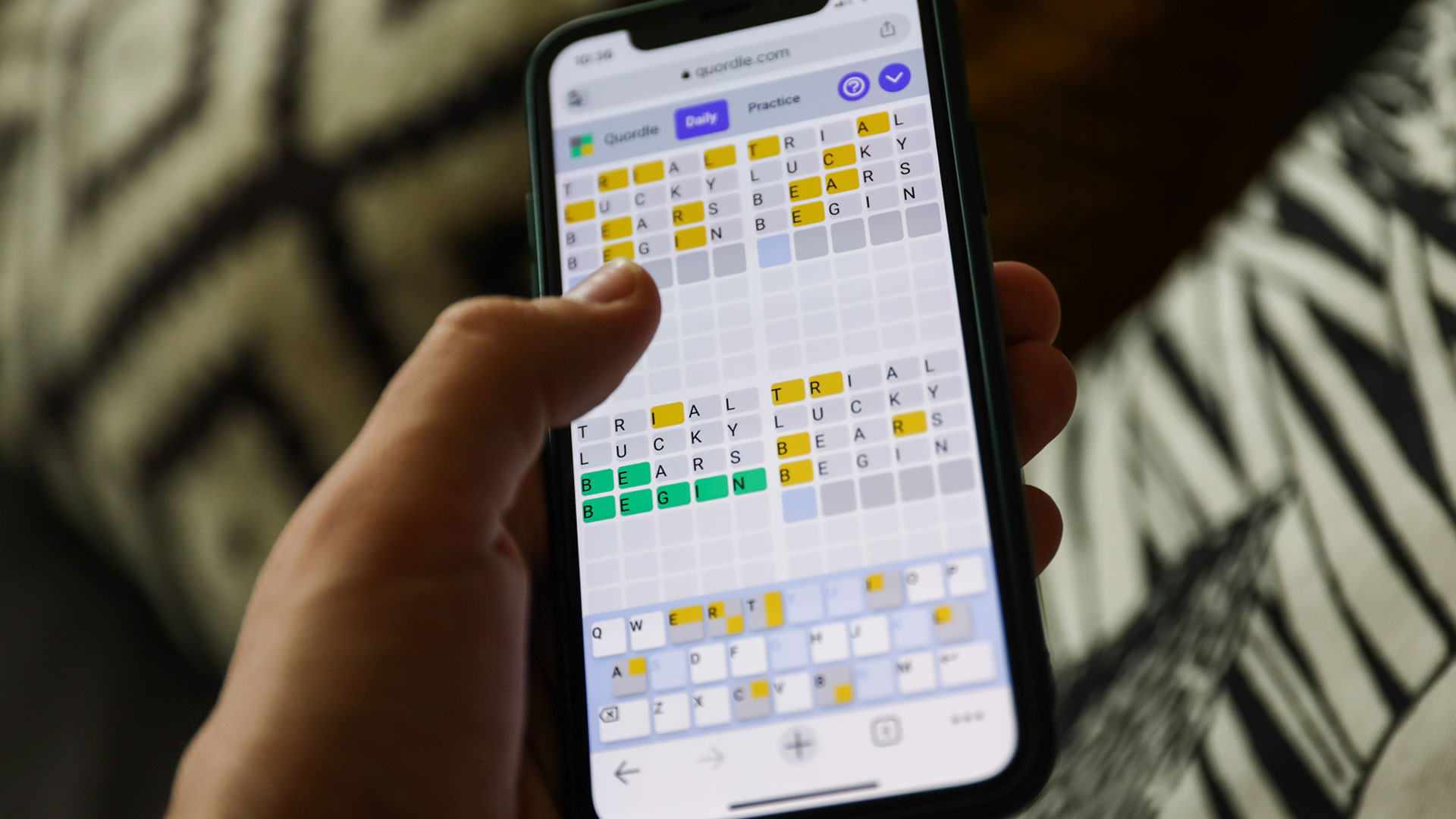0 التعليقات
0 المشاركات
104 مشاهدة

الدليل
الدليل
-
الرجاء تسجيل الدخول , للأعجاب والمشاركة والتعليق على هذا!
-
 WWW.YOUTUBE.COMUnreal Engine 5 Rendering: Post-Processing with DaVinci Resolve (Tutorial)In this tutorial, we'll explore how to enhance your Unreal Engine 5 renders using the powerful color grading and post-processing capabilities of DaVinci Resolve.We'll cover:-Importing UE5 renders into DaVinci Resolve-Working with the node-based color grading system-Adjusting color and contrast using curves and color wheels-Adding and adjusting key effects like Glow, Film Grain, Vignette, and Halation-Creating a professional look for your Unreal Engine 5 rendersThis video is perfect for any Unreal Engine 5 artist looking to take their renders to the next level.Link to Eagle: https://www.fab.com/listings/086b6c5d-7453-4b27-a609-b9f89b80a572 Don't forget to like and subscribe for more Unreal Engine 5 tips and tricks!0 التعليقات 0 المشاركات 261 مشاهدة
WWW.YOUTUBE.COMUnreal Engine 5 Rendering: Post-Processing with DaVinci Resolve (Tutorial)In this tutorial, we'll explore how to enhance your Unreal Engine 5 renders using the powerful color grading and post-processing capabilities of DaVinci Resolve.We'll cover:-Importing UE5 renders into DaVinci Resolve-Working with the node-based color grading system-Adjusting color and contrast using curves and color wheels-Adding and adjusting key effects like Glow, Film Grain, Vignette, and Halation-Creating a professional look for your Unreal Engine 5 rendersThis video is perfect for any Unreal Engine 5 artist looking to take their renders to the next level.Link to Eagle: https://www.fab.com/listings/086b6c5d-7453-4b27-a609-b9f89b80a572 Don't forget to like and subscribe for more Unreal Engine 5 tips and tricks!0 التعليقات 0 المشاركات 261 مشاهدة -
 WWW.GAMESPOT.COMEmio - The Smiling Man's Final Chapters Are A Masterclass In SuspenseAs surprising as it was to see Nintendo drop an uncharacteristically creepy teaser earlier this year about a masked man known as "Emio," few could have expected it would be related to a brand-new entry in the company's long-dormant Famicom Detective Club series. What's less surprising is just how riveting the game turned out to be, an expertly paced thriller whose setting, music, and atmosphere masterfully crescendo into one of the most suspenseful denouements Nintendo has ever conjured.Spoilers for Emio - The Smiling Man follow.The lead-up to this climax, however, is anything but straightforward. Like the previous two games in the Famicom Detective Club series, Emio - The Smiling Man is a slow-burn detective story--a densely plotted mystery that unravels methodically over the course of roughly a dozen hours. Picking up a few years after the events of The Missing Heir, the Utsugi Detective Agency is enlisted to aid police detectives Junko Kuze and Daisuke Kamihara in investigating the death of a teenage boy, who was discovered wearing a paper bag unsettlingly scrawled with a smiley face.Continue Reading at GameSpot0 التعليقات 0 المشاركات 129 مشاهدة
WWW.GAMESPOT.COMEmio - The Smiling Man's Final Chapters Are A Masterclass In SuspenseAs surprising as it was to see Nintendo drop an uncharacteristically creepy teaser earlier this year about a masked man known as "Emio," few could have expected it would be related to a brand-new entry in the company's long-dormant Famicom Detective Club series. What's less surprising is just how riveting the game turned out to be, an expertly paced thriller whose setting, music, and atmosphere masterfully crescendo into one of the most suspenseful denouements Nintendo has ever conjured.Spoilers for Emio - The Smiling Man follow.The lead-up to this climax, however, is anything but straightforward. Like the previous two games in the Famicom Detective Club series, Emio - The Smiling Man is a slow-burn detective story--a densely plotted mystery that unravels methodically over the course of roughly a dozen hours. Picking up a few years after the events of The Missing Heir, the Utsugi Detective Agency is enlisted to aid police detectives Junko Kuze and Daisuke Kamihara in investigating the death of a teenage boy, who was discovered wearing a paper bag unsettlingly scrawled with a smiley face.Continue Reading at GameSpot0 التعليقات 0 المشاركات 129 مشاهدة -
 GAMERANT.COMThe One Problem Denis Villeneuve Must Overcome While Adapting Dune: MessiahThe upcoming adaptation of Dune: Messiah might be the most anticipated sci-fi project in the near future. However, director Denis Villeneuve faces significant hurdles he must overcome to bring his grand vision to life perhaps more than any other Dune film or TV show.0 التعليقات 0 المشاركات 111 مشاهدة
GAMERANT.COMThe One Problem Denis Villeneuve Must Overcome While Adapting Dune: MessiahThe upcoming adaptation of Dune: Messiah might be the most anticipated sci-fi project in the near future. However, director Denis Villeneuve faces significant hurdles he must overcome to bring his grand vision to life perhaps more than any other Dune film or TV show.0 التعليقات 0 المشاركات 111 مشاهدة -
 GAMERANT.COMDisney Dreamlight Valley: How to Get PosidoniaDisney Dreamlight Valleys second expansion, Storybook Vale, has introduced fans to the massive world of Storybook Vale. This world has three magical biomes with individually unlocked areas and many new items and fish. But not everything you reel in is a fish. You can also fish up some items like Posidonia, which can be used for crafting, kind of like Plastic Scrap from A Rift in Time.0 التعليقات 0 المشاركات 98 مشاهدة
GAMERANT.COMDisney Dreamlight Valley: How to Get PosidoniaDisney Dreamlight Valleys second expansion, Storybook Vale, has introduced fans to the massive world of Storybook Vale. This world has three magical biomes with individually unlocked areas and many new items and fish. But not everything you reel in is a fish. You can also fish up some items like Posidonia, which can be used for crafting, kind of like Plastic Scrap from A Rift in Time.0 التعليقات 0 المشاركات 98 مشاهدة -
 GAMERANT.COMRemembering the Switch's Launch Games Ahead of the Switch 2's Reveal2024 has been a pretty solid year for Nintendo. Along with the Nintendo Switch finally outselling the PS2 in the US, Nintendo has earned a steady income this year by releasing a surprising number of first-party releases, including a long-awaited remake of Paper Mario: The Thousand Year Door, Princess Peach: Showtime, and The Legend of Zelda: Echoes of Wisdom. But it's clear that the Nintendo Switch is nearing the end of its lifespan, and any day now, Nintendo could reveal its successor.0 التعليقات 0 المشاركات 113 مشاهدة
GAMERANT.COMRemembering the Switch's Launch Games Ahead of the Switch 2's Reveal2024 has been a pretty solid year for Nintendo. Along with the Nintendo Switch finally outselling the PS2 in the US, Nintendo has earned a steady income this year by releasing a surprising number of first-party releases, including a long-awaited remake of Paper Mario: The Thousand Year Door, Princess Peach: Showtime, and The Legend of Zelda: Echoes of Wisdom. But it's clear that the Nintendo Switch is nearing the end of its lifespan, and any day now, Nintendo could reveal its successor.0 التعليقات 0 المشاركات 113 مشاهدة -
WWW.ENGADGET.COMHealthcare organizations in the US may soon get a cybersecurity overhaulA set of new requirements proposed by the US Department of Health and Human Services (HHS) Office for Civil Rights could bring healthcare organizations up to par with modern cybersecurity practices. The proposal, posted to the Federal Register on Friday, includes requirements for multifactor authentication, data encryption and routine scans for vulnerabilities and breaches. It would also make the use of anti-malware protection mandatory for systems handling sensitive information, along with network segmentation, the implementation of separate controls for data backup and recovery, and yearly audits to check for compliance.HHS also shared a fact sheet outlining the proposal, which would update the Health Insurance Portability and Accountability Act of 1996 (HIPAA) Security Rule. A 60-day public comment period is expected to open soon. In a press briefing, US deputy national security advisor for cyber and emerging technology Anne Neuberger said the plan would cost $9 billion in the first year to execute, and $6 billion over the subsequent four years, Reuters reports. The proposal comes in light of a marked increase in large-scale breaches over the past few years. Just this year, the healthcare industry was hit by multiple major cyberattacks, including hacks into Ascension and UnitedHealth systems that caused disruptions at hospitals, doctors offices and pharmacies.From 2018-2023, reports of large breaches increased by 102 percent, and the number of individuals affected by such breaches increased by 1002 percent, primarily because of increases in hacking and ransomware attacks, according to the Office for Civil Rights. In 2023, over 167 million individuals were affected by large breaches a new record.This article originally appeared on Engadget at https://www.engadget.com/cybersecurity/healthcare-organizations-in-the-us-may-soon-get-a-cybersecurity-overhaul-220933165.html?src=rss0 التعليقات 0 المشاركات 111 مشاهدة
-
 WWW.TECHRADAR.COMNYT Connections today my hints and answers for Sunday, December 29 (game #567)Looking for NYT Connections answers and hints? Here's all you need to know to solve today's game, plus my commentary on the puzzles.0 التعليقات 0 المشاركات 100 مشاهدة
WWW.TECHRADAR.COMNYT Connections today my hints and answers for Sunday, December 29 (game #567)Looking for NYT Connections answers and hints? Here's all you need to know to solve today's game, plus my commentary on the puzzles.0 التعليقات 0 المشاركات 100 مشاهدة -
 WWW.TECHRADAR.COMNYT Strands today my hints, answers and spangram for Sunday, December 29 (game #301)Looking for NYT Strands answers and hints? Here's all you need to know to solve today's game, including the spangram.0 التعليقات 0 المشاركات 98 مشاهدة
WWW.TECHRADAR.COMNYT Strands today my hints, answers and spangram for Sunday, December 29 (game #301)Looking for NYT Strands answers and hints? Here's all you need to know to solve today's game, including the spangram.0 التعليقات 0 المشاركات 98 مشاهدة -
 WWW.TECHRADAR.COMQuordle today my hints and answers for Sunday, December 29 (game #1070)Looking for Quordle clues? We can help. Plus get the answers to Quordle today and past solutions.0 التعليقات 0 المشاركات 100 مشاهدة
WWW.TECHRADAR.COMQuordle today my hints and answers for Sunday, December 29 (game #1070)Looking for Quordle clues? We can help. Plus get the answers to Quordle today and past solutions.0 التعليقات 0 المشاركات 100 مشاهدة




